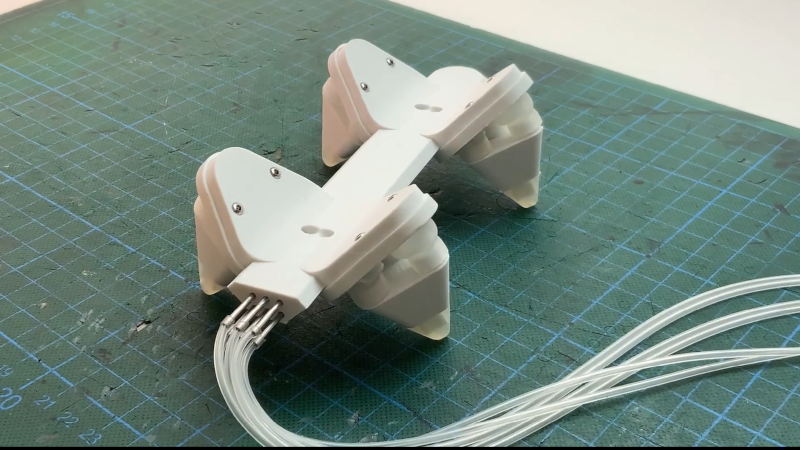If you want to get started in microfluidic robotics, [soiboi soft’s] salamander is probably too complex for a first project. But it is impressive, and we bet you’ll learn something about making this kind of robot in the video below.
The pneumatic muscles are very impressive. They have eight possible positions using three sources of pressure. This seems like one of those things that would have been nearly impossible to fabricate in a home lab a few decades ago and now seems almost trivial. Well, maybe trivial isn’t the right word, but you know what we mean.
The soft robots use layers of microfluidic channels that can be made with a 3D printer. Watching these squishy muscles move in an organic way is fascinating. For right now, the little salamander-like ‘bot has a leash of tubes, but [soiboi] plans to make a self-contained version at some point.
If you want something modular, we’ve seen Lego-like microfluidic blocks. Or, grab the shrinky dinks.
















Only indecent things come to my mind, every time I see a soft robot/actuators
And there is your billion dollar market…
Wait until you see the hard robot
The hard robot is here to punish you.
I’d not call it that sort of microfluid stuff impossible to do in a homelab decades ago – this so far is so very simple you’d just use tubes attached to junction bits. And those are just drilling some slightly high aspect ratio holes in about the right places so the holes meet when you want them to – Something you can probably manage with good magnification and a decent drillpress for something this simple, and very similar to the model steam engineers methods of getting steam pipes in the valves and pistons (though there the geometry is usually more complex so you’d need a sine table or something to set the desired angles).
In many ways its much the same thing as circuit sculpture if you used metal tubes – you just have to bend them in the right places and push them into the blocks to create that T junction, sharper 90 than you can bend etc.
Not that I don’t think these printed versions are impressive (wonder how leaky they are though), or this relatively simple construction isn’t good fun and a great iterative step to greater complexity. But this level of micro fluid stuff wouldn’t be hard with pretty basic workshop tools – you’d have to go small or far more complex is design for that (which is where the printed ones will become great as they won’t care very much if at all that the geometry has gotten more complex).
You can just whittle most 3d printed things out of a stick.
This project, popsicle sticks and WD-40 spray straws.
For efficiency.
wow
I find that amazing and the video is super well done!